Looking FOR Learning through the Lens of Growth Mindset

I recently had the opportunity to be part of a teacher conference with the theme of Looking for Learning through the Lens of Growth Mindset.
edJEWcon Chicago took place in November 2015 on the campus of the Solomon Schechter Day School of Metropolitan Chicago. Around 300 educators convened from six Jewish day schools from the Chicago area.
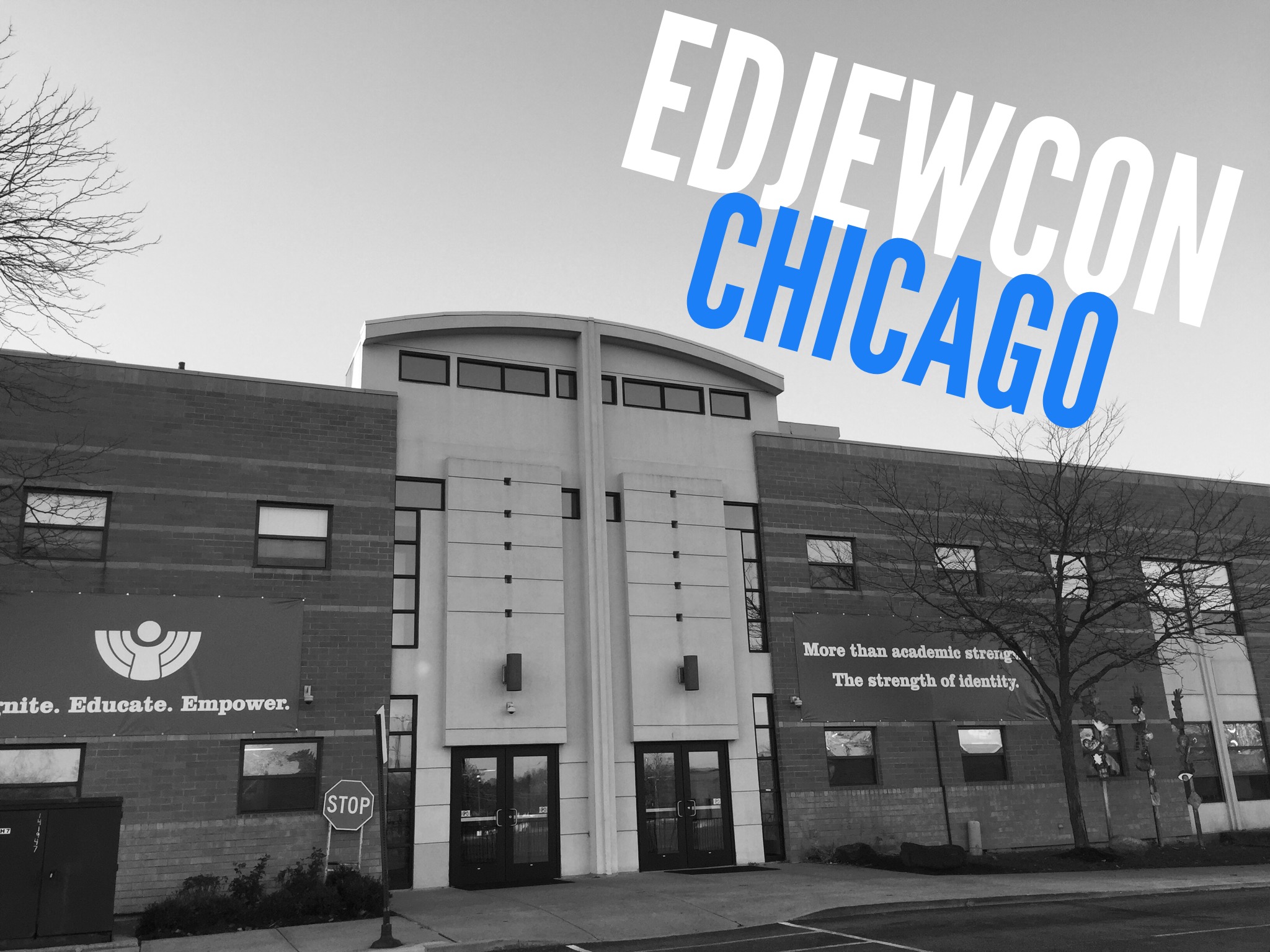

edJEWcon was conceived out of the necessity to upgrade professional development opportunities for educators in Jewish Day Schools.
- We knew that isolated PD workshops did not work…
- We knew that learning in isolation did not work…
- We knew that we needed to give teachers the time to experience and live through the same type of learning that we wanted them to bring into their classrooms for their students…
- We also knew that John Dewey was right when he said, “we don’t learn from experience, we learn from reflecting on the experience”.
Hence edJEWcon’s mantra was born… LEARN-REFLECT-SHARE
How could we embed the conference theme and mantra as part the conference day?
The essential questions of the day were:


- What does growth mindset mean for us as adults?
- What do teachers need as part of school culture in order to do the work of cultivating growth mindset?
- What resources are administrators using to create cultures of growth mindset in schools?
The Learning Intentions were set to be:
Tools and ideas to transform education. Sign up below.
- Learning how to learn in the 21st century
- Looking for Learning (in ourselves)
- Strengthening a Growth Mindset as an Adult Learner
We kept close to these learning intentions in the belief, that educators had to experience the type of learning, they hoped to see in their students. How could we give teachers the opportunity to experience documenting FOR and AS learning? Learning to tell the story of their learning, but also learning to become aware and being able to articulate a narrative of where are we going as learners and as a school community?

The keynote(s) we shared that morning were reliant on the participants’ willingness to be learners, to be pushed just a little out of their comfort zone

Seth Sandler explains the three rings quite nicely:

First Ring: Comfort Zone
The comfort zone is where many of us operate. It’s the location of the skills and abilities we’ve acquired. While the comfort zone is by definition the most ‘comfortable’, we can’t make progress or build skills in the comfort zone since it consists of the abilities we can already do easily.
2nd Ring: Learning Zone—- Magic Happens
One can only make progress by choosing activities in the learning zone. The skills and abilities that are just out of reach are in the learning zone; they’re neither so far away that we panic nor close enough where they’re too easy.
3rd Ring: Panic Zone
If you’ve ever become so anxious you can no longer think, you’ve probably run into the panic zone. Activities in the panic zone are so tough that we don’t even know how to approach them. The overall feeling of the panic zone is that you are uncomfortable and possibly discouraged. Like the comfort zone, we can’t make progress in the panic zone.
We knew, we could expect participants to be overwhelmed with content, technology, platforms, ideas, resources, etc., but we wanted them to be aware of these feelings. Aware of HOW learners feel… everyday… in their classrooms….in their schools….as part of the reality of the 21st century…

Did being aware of these feelings mean that they also were aware of the messages and signals that their brain might already be sending them:
- I don’t know how to do that!
- This is too much!
- I am not good with tech stuff!
- This is too hard!
- I am going to retire in a few years, this is not my problem anymore!
- What if I can’t do this?
Or on the flip side, some might not feeling overwhelmed regarding the learning intentions we had set?… but felt more like:
- I got this
- I already know this
- I have been teaching for many many years, I know what I am doing
- How does this apply to me? I want to know how I can instill a growth mindset in my students, growth mindset has nothing to do with me!
We took another look at the characteristics of a fixed versus a growth mindset and applied them to ourselves. Where do we fall? On this side? On that side? A little bit on both sides?

No matter how much the teachers already knew about Carol Dweck and her growth mindset theory, we asked them to practice characteristics of that very growth mindset and that to look at the CHANGE around us that are impacting education and at the exponential and constant speed things are changing. We asked them to look at themselves and at the CHANGE FOR LEARNERS that was required in the 21st century in order to prepare students for the 22nd century.

Eduardo Briceño cleared up some common confusions about Growth Mindset in an article in MindShift- How we will learn. Carol Dweck herself revisits her own theory of Growth Mindset and warns the misuse of her theory, when she sees:
educators who claimed to have a growth mindset, but whose words and actions didn’t reflect it.
We reminded teachers that a growth mindset is NOT about attending this one day conference nor letting everyone know that one already have a growth mindset, but about continuous improvement or as Carol Dweck says:
the path to a growth mindset is a journey, not a proclamation.
What if each and every one of us, would ask ourselves not
What if I can’t do it? but
What if I CAN do it?


How would our learning as a community be different today? What if everyone would think: What if I can learn and contribute? What if I can share?
The answers below were contributed to a Today’s Meet backchannel platform:






We asked teachers to start where they were. We asked them to:
- Don’t just look… observe
- Don’t just hear… connect
- Don’t just think… reflect
- Don’t just have your body present… but have your mind present!

While the keynote(s) shared many different approaches of new pedagogies involving technology, it was not about technology. We asked teachers to LOOK FOR LEARNING and not for the tool or the platform. How easy is it to dismiss a paradigm shift in LEARNING, if lumped together under the umbrella of “tech stuff”!
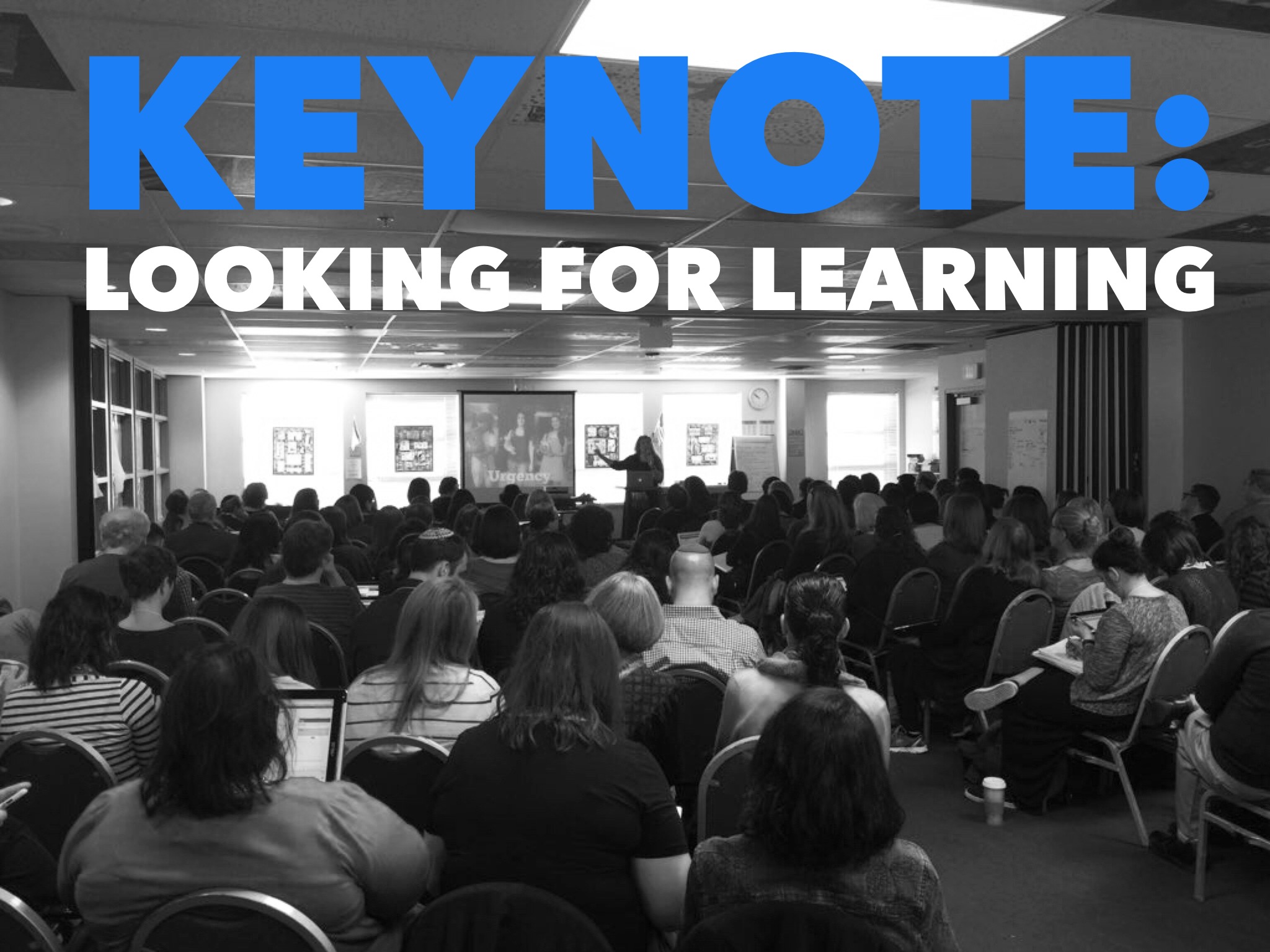
We did not just want to talk about different types of learning, we wanted participants to experience it as well. There is not better way to teach than to show, not only tell…
Teachers, not only talked about Growth Mindset and took a closer look at an infographic/ThingLink titled “The Educator and the Growth Mindset”, we also skyped Dr. Jackie Gerstein, creator of the infographic and ThingLink and directly asked her questions.

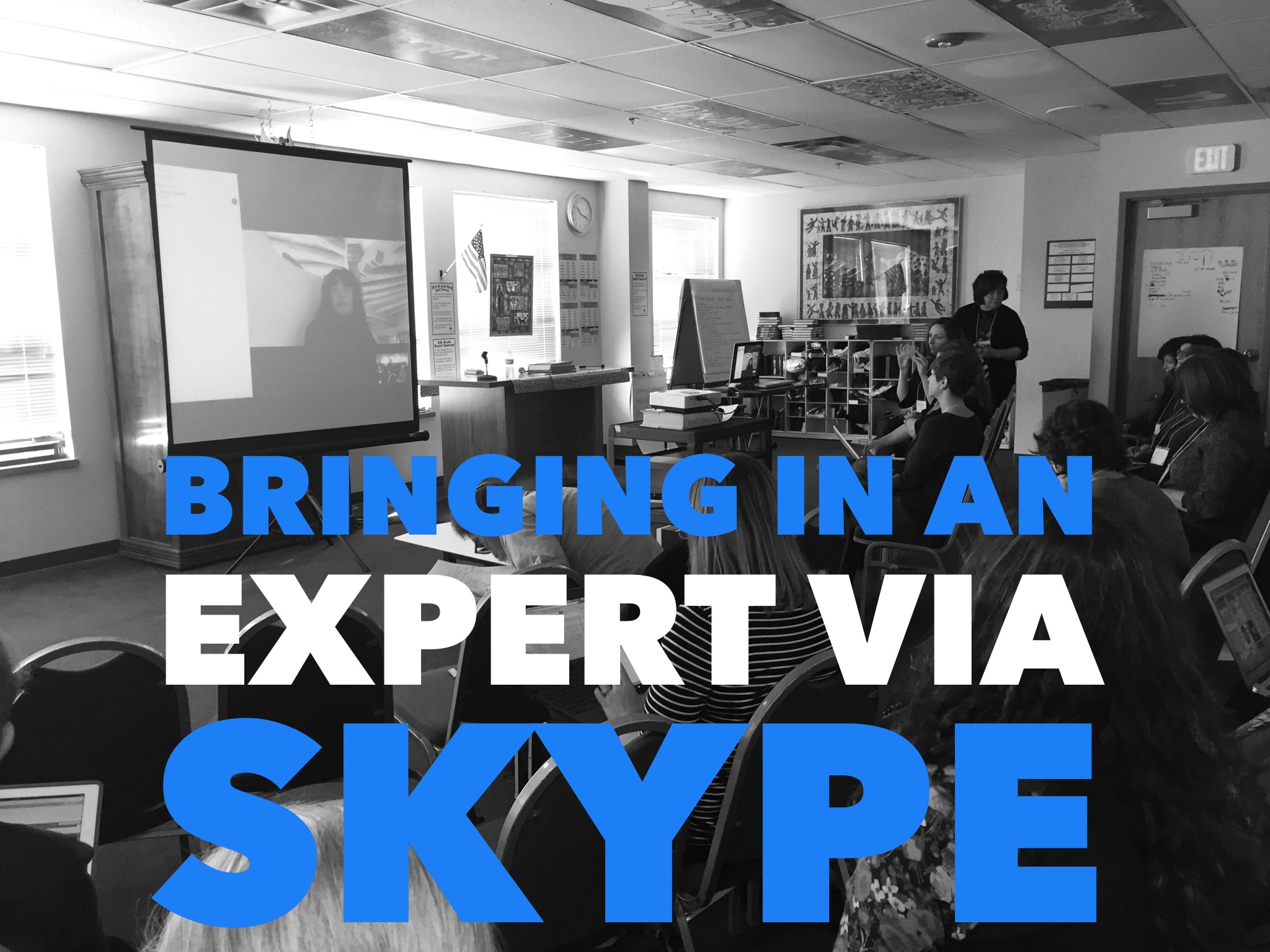
Listen in to the skype call, brought to you (in case you were not present during the presentation) by the power of “documentation”.
I have worked with the concept of documenting FOR and AS learning and written extensively about the topic on the Langwitches blog. The concept operates under the assumption that looking for learning with the idea of :
- being aware of what learning looks like?
- how we can capture learning?
- how we can make thinking and learning visible?
- how can we reflect on the learning as par the process of learning?
- sharing the learning , not as an add-on, but as part of a moral imperative
We asked to document our learning throughout the day in different ways, from video recording, images, sketchnotes, backchanneling to post-it notes.

edJEWcon believes in Alan November’s words
“Collaboration and sharing knowledge are highly prized skills”.
This concept of collaborating and sharing beyond one’s own classroom or school building might in itself be already a BIG PUSH outside of some comfort zone…but this is precisely where we needed to demonstrate (not just talk about) our own growth mindset.

The benefit and process of marking our thinking visible has been researched and shared by Harvards Project Zero and written about by Ron Ritchart in his books Make thinking Visible and Creating Cultures of Thinking. I am adding another layer to the equation by making the DOCUMENTATION over time an important ingredient in the process of learning. Documenting embeds the process (not just a final product), a reflective component and feedback!
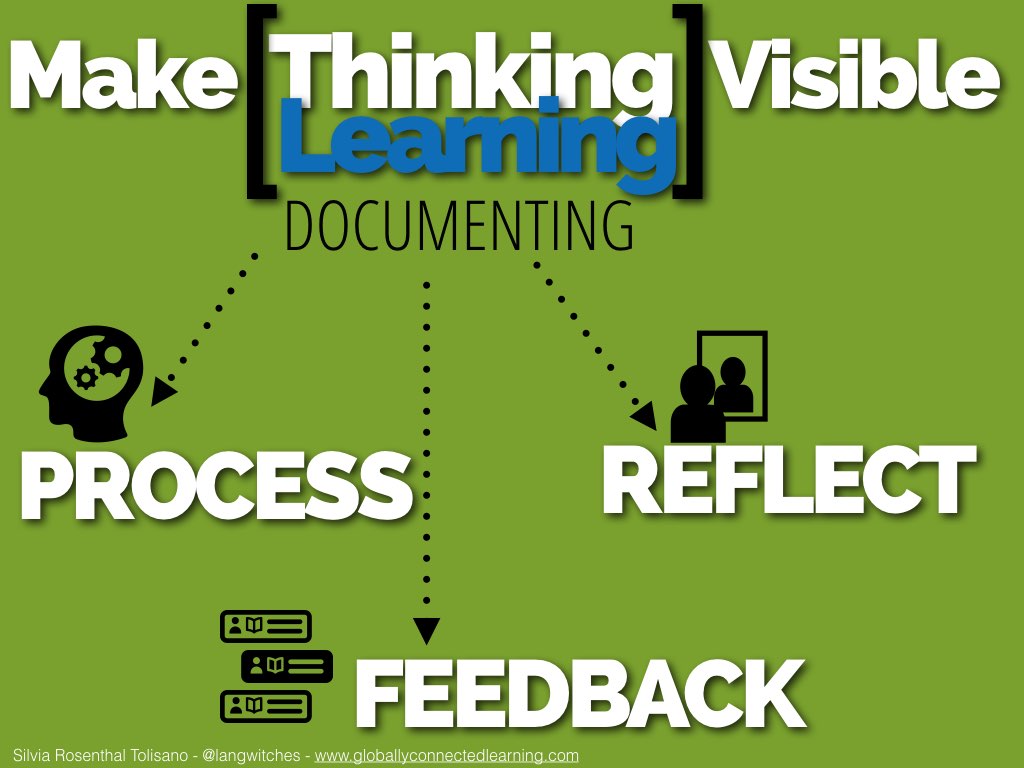
Carol Dweck, in an article, where she revisits her Growth Mindset theory, points out that students need to learn and
try new strategies and seek input from others when they’re stuck.

As we are all, administrators, teachers and students, embark on a journey of documentation FOR and AS learning, we need to bring awareness to, create common vocabulary and decide what we will consider as evidence of growth.

Stephen Downes in a post titled ” A few Words about ePortfolios” reminds us that
Increasingly in the future, students will be responsible for managing their own online learning records and creative products… they will need to manage these resources, index them and enable access to them.

We need to keep Stephen’s words in mind, as we are documenting. If we do not have a platform, nor a strategic plan how we will archive, manage and connect our online learning records, we are setting us up for trouble.

edJEWcon has created a platform and a learning community to support the development of documentation FOR and AS learning in form of shared documentation and reflection of a professional learning process as educators in Jewish Day Schools.
Blogfolios, defined by Andrea Hernandez as
Portfolios give students a chance to develop metacognition, set goals and internalize what “good work” looks like. Blogs offer a platform for creativity, communication, connection and the practice of digital citizenship. “Blog-folios” are the best of both worlds- using a blogging platform to develop writing skills, provide opportunities to connect with an authentic audience and increase reflective practices.
Abraham Harold Maslow was an American psychologist who was best known for creating Maslow’s hierarchy of needs. He encourages us to remember that:
In any given moment we have two options: to step forward into growth or to step back into safety.
We invite you to step forward into growth by participating, reading, writing, contributing, reflecting, documenting AND sharing on edJEWcon.org in order to grow a community of learners from Jewish Day Schools.

Taking the leap of looking at Growth Mindset for students, we encouraged attendees to examine themselves in terms of their own Growth Mindset as life long learners. How does a school look like who embodies the characteristics of the Growth Mindset theory?

From the keynote(s) which set the tone, we transitioned into a Collective Wisdom session. Participants were divided into different groups and had the opportunity to discuss and document their conversation.



The first guiding question was
What motives you to persevere when learning something new or difficult?

Participants were asked to answer in 140 characters or less and share their answers on a post it note (click image to be able to read contributions).

A second guiding question for the collective wisdom discussion was posed: This time, we asked participants to create an image or sketch their discussion.

How can you create learning environments that foster growth mindset?


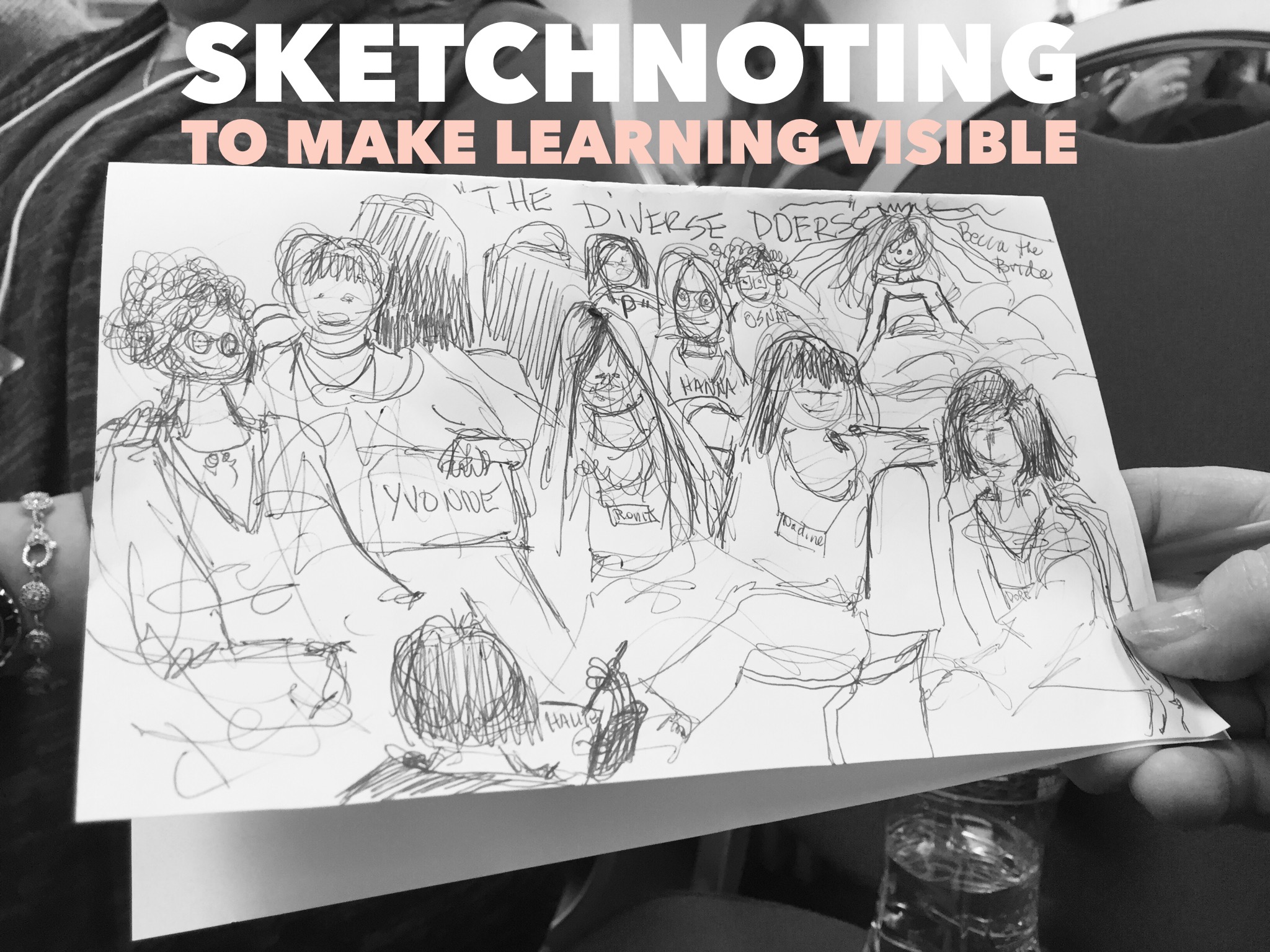
Participants were asked to use a backchannel to share their answers to the third guiding question:
What quotes about growth mindset resonate with you? What tools and resources have you used to help your students build growth mindsets?

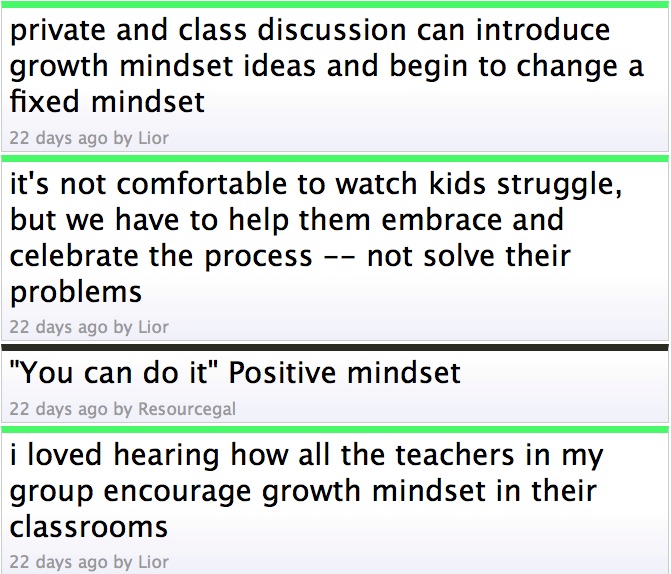

The third part of the day was planned as a “Deep Dive” by sharing the artifacts that were created during keynote and the collective wisdom sessions, reflecting publicly on the blog and and giving/receiving feedback in form of comments.
As Murphy’s Law states: “Anything that can go wrong, will go wrong”, participants were not able to log into their blog accounts on edJEWcon in the afternoon.
What an opportunity to apply a growth mindset and not throw in the towel due to obstacles or mistakes? The Deep Dive session was quickly re-arranged into a face to face Speed-Geek Sessions with grade-level sharing session of best practices.
Catch glimpse of a few seconds video of the conversation that took place during the Deep Dive.

If you made it this far in reading this blog post, my question to you is about the value of documentation? What are the advantages for the reader….? I know the time, effort, reflection and learning that went into putting this post together… in itself enough value… , but what about you as a reader?
- Someone who was there and is taking advantage of my perspective…
- Someone who was there and is adding my documentation to their documentation…
- Someone who was there and was in one or the other keynote, session or group, missing the conversation that occurred in another.
- Someone who was NOT there… what are you taking away from the documentation?
cross posted at langwitches.org/blog
Silvia Tolisano is a Curriculum21 faculty member, author of the book Digital Storytelling Tools for Educators and founder of the Around the World with 80 Schools project. Read more at http://langwitches.org/blog.
